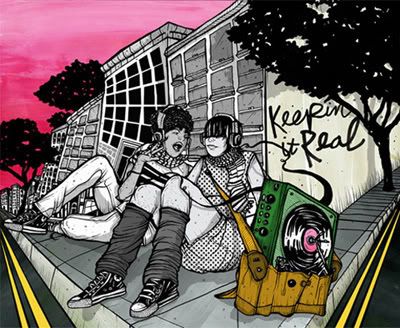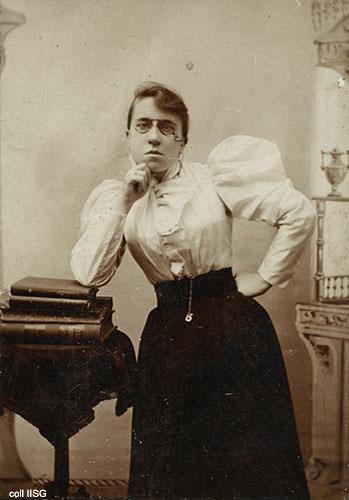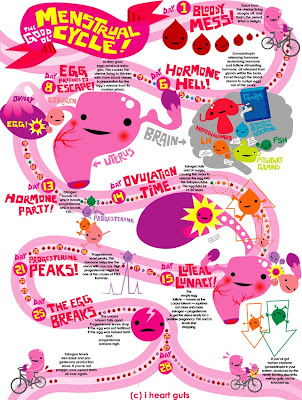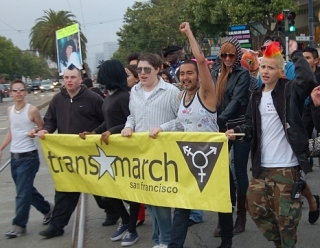I wrote this for a class, seminar paper.
*********
The real world. I feel as though I have been living in the “real world” since I got pregnant in 2000. I was 18 years old and a senior in high school. However, the transition from being an undergraduate to possibly going into the graduate program in counseling at the University of North Dakota will also be a huge change. Being ready for a challenge to learn new skills, concepts, and interact with other faculty and students is exciting to look forward to in the next school year.
Since high school graduation, I have had jobs that required a Bachelor’s Degree. These jobs have made boring, office, marketing jobs very unappealing. Sometimes I find this problematic, I feel that paid labor is slavery within our capitalist system. Unfortunately I have to trade my labor for money so I can survive in our society. Otherwise, I will end up in an unstable life, traveling with the “punk rock, train kids” I know. I have a daughter; I need to stay somewhat put, somewhat static. If I did not read Karl Marx, would I still have this view? I cannot turn the critical theorist off in my head and while this makes my experiences somewhat problematic (it is really hard to NOT question things!), I still feel this is a good thing. I do not totally buy into the “status quo” and I do not feel that I can. Besides, I got pregnant in high school; my existence is already against the “status quo.”
My time as an undergraduate has been an amazing experience, as I have been able to focus on what I potentially wanted to do, learn new concepts, and meet a lot of people. The experiences I have had working with professors through research, expanding my knowledge beyond the “punk rock” view I had on the world, and improving my writing and analytical skills have been really worthwhile. The experiences I have had at the UND have really been more than I initially expected, but I think this partly came from me talking to professors, networking, and being willing to do new things and take the initiative on asking for help and introducing myself.
However I have been an undergraduate since 2004 and I am ready for a change and a challenge. Graduate school is the venue for that change and challenge, particularly a different program. I will be learning counseling skills, using theory, and working with new faculty and students. Since I am 27-years-old single mother of an 8.5-year-old, I will also feel I will “fit in” more with other graduate students. I am fairly older than most undergraduates and I feel I have experienced more, so it is hard to “fit in” with the undergraduate students. As I believe this is a pretty common view among “non-traditional” students.
Before I went to college after high school, I took two-and-a-half years off before I started and moved to Minneapolis to attend Minneapolis Community and Technical College. Although I majored in Graphic Design, this was where I actually got my first experiences of women, gender, feminist, and queer studies/theory in an academic setting. I took a couple courses and had a feeling that I wanted to continue this as I went on with my college career.
When I transferred to UND, I was overjoyed to see those courses available. Between UND and the community college I attended, I honestly enjoyed the experience at UND more because I got to know professors and do research. However, I enjoyed the experience at the community college for the range of wide backgrounds of my fellow students. Instead of being the oldest in most classes, I was one of the youngest. There were all kinds of class backgrounds, races, genders, ages, student parents, and so on. Both have come together to be an enriching part of my experience as an undergraduate, however. While I have learned from students in both settings, it was less alienating at the community college.
With being an undergraduate, I will miss having the “expertise” in the class of feminist and queer theory. As I have heard in graduate school, a student’s mind gets broken down, built up, and broken down again. I have also heard, people get their brains picked until they cannot be picked anymore. Honestly, it sounds scary and over whelming, but I am excited and ready for that. I have been bored with school this semester because I am not being challenged the way I want or can be. I will also miss the more leisure time I have. With counseling, I will have an internship and have a lot more work. However, I am ready and really excited.
Lastly, one of the issues I face is actually getting into the counseling program at UND. I have been on public assistance and have been wondering how that will pan out because if I get a job and make past a certain amount of money a month, as I will get kicked off partially or all the assistance. I am not sure if I can afford the bills on my own. My financial situation has been a struggle since I got pregnant. The feminization of welfare and the static federal government’s definition of who/what falls under the poverty line have made it harder for poor people to get ahead. Prices have changed since the 1960s, while food has stayed somewhat fixed when put in comparison with inflation, other factors such as rent, electric bills, gas, and medical expenses have gone up. Women are more likely than men to be in poverty, single parents are more often single mothers, and single mothers are more often than non-single mothers to be in poverty. Speaking on that, I feel I have had a lot of barriers since becoming pregnant.
Having the experience with interdisciplinary studies has been so important to how I see the world. Not only with being a woman and a single mother, but identifying as a feminist, as well. I have gained a perspective on the world that analyzes power, oppression, and privilege. I am constantly bringing up the issue of gender and how sexism, racism, heterosexism, and classism interact. My track has also helped me to deconstruct social constructive binaries of gender (female/male) and sexuality (straight/gay), as well as many others that I try to break down, even in my daily conversations with others.
The training I have had in interdisciplinary studies has most certainly prepared me for my analysis and critique of the world. I want to be a counselor and continue my passion for women, the LGBTQ community, abortion issues, domestic violence and rape survivors, poor communities, and children. I want to work with pregnant teenagers, women who are having abortions, survivors, and transgender and queer youth. Being able to provide empowerment, support, and love to these people would be a wonderful experience. Anything from holding a woman’s hand during an abortion, to crying with a teenager who came out to her/his parents as queer, or hugging a teenager and telling her she is not a “fuck up” for getting pregnant. My track has certainly given me perspective and knowledge on these issues. Not only will I gain counseling skills in graduate school, but I will also come in with an understanding of their experiences and the societal views and norms they face.
Being able to provide support and empowerment to people who are part of a marginalized group has been part of the aim as and interdisciplinary studies major. To be able to act out that support and empowerment would be want I want to continue in graduate school and my career. Having been focused on feminist, women, and queer studies has completely prepared me for the future road I want to continue.
I wrote a book: J Is for Justice! an Activism Alphabet
11 months ago







































